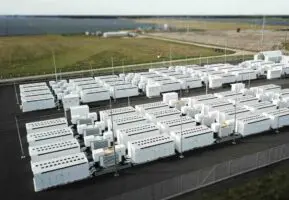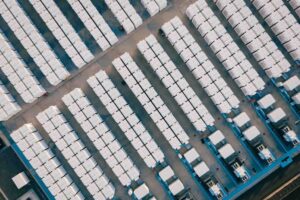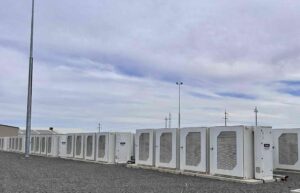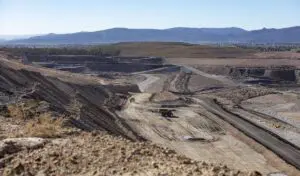A new report has highlighted the extraordinary expense Australia’s electricity networks have passed on to consumers to meet demand forecasts that never eventuated. It says the energy market is “not fit” for its stated purpose of providing a benefit to consumers.
The report, Zero Carbon Australia, Renewable Energy Superpower, by Beyond Zero Emissions, shows that networks on Australia’s main grid, the National Electricity Market – which excludes WA, the Northern Territory and off-grid areas like Mt Isa in Queensland – have spent $75 billion on network improvements and expansion in the past 10 years and passed these costs on to consumers.
The spending was justified on demand forecasts that have proven to be outrageously wrong. Indeed demand, far from growing, has barely changed over the past decade. But electricity bills have more than doubled, driven almost exclusively by these soaring network costs, compounded by exaggerated rates of return that benefited the networks and hit the consumer.
 The spending is highlighted in this graph to the right. The report says the over-investment has been encouraged by the NEM structure, first by the move to “corporatise” utilities and then by distorting their business conditions.
The spending is highlighted in this graph to the right. The report says the over-investment has been encouraged by the NEM structure, first by the move to “corporatise” utilities and then by distorting their business conditions.
It notes that the networks’ costs to consumers have been further exaggerated by “Weighted Average Cost of Capital” (WACC) — the interest yield on the assets they held – which is far above the market rate for low-risk assets.
“In order to fully exploit the inflated yields, and hence maximise profits, network businesses have sought to expand their ‘poles and wires’ asset base. To do this, network businesses over-hyped future demand from the grid, in order to be granted expansion approval by the Australian Energy Regulator (AER).”
 This next graph shows those demand forecasts, and what actually eventuated. As the report notes, some $75 billion was invested in transmission and distribution network upgrades, causing the regulated asset base to double to $77 billion by 2014.
This next graph shows those demand forecasts, and what actually eventuated. As the report notes, some $75 billion was invested in transmission and distribution network upgrades, causing the regulated asset base to double to $77 billion by 2014.
The demand forecasts have proved ludicrously wrong. This graph to the right shows how the 2010 forecasts have been wound back. Even the 2014 forecast may be optimistic. And total demand is virtually the same as in 2005. But networks had a strong incentive to produce such optimistic forecasts, because the more they could build, the more revenue they could receive.
“Because network revenue is guaranteed by the regulator, consumers must pay for this new capacity whether they use it or not,” the report notes. “Clearly the demand did not rise in line with projections, but declined.”
The network response to this has been to reject outright any proposals that they should take a write-down on the inflated value of the assets. For the next five-year period, they have attempted to continue their spending spree, and have taken the extraordinary step of taking the Australian Energy Regulator to court after it rejected their spending proposals.
Now, the NSW networks have also flagged a potential “solar tax”, to hit households that export solar back into the grid with extra charges. They flag similar fees for households using battery storage and electric vehicles.
Network spending on electricity have not been the only way that utilities have bled customers. The report says history is being repeated with Australia’s gas system, also governed by the Australian Energy Market Commission according to the National Gas Rules.
“The supply network is being expanded and new unconventional gas supplies are being developed, at great cost, to satisfy projected demand,” it notes.
“Warnings are being sounded that consumers will withdraw from the gas system even more dramatically than the electricity system as a result of rising gas prices and substitution of efficient electric appliances.”
This is known as the “death spiral” and it is likely to happen in the electricity network too, as the plunging cost of solar and battery storage offer alternatives. Which is one reason why networks, not just resisting calls to write down the value of those inflated assets, are talking about compulsory fees even for those who leave the grid, as well as a special tax on the use of solar, battery storage and electric vehicles.
The report says that in the retail market, consumers are also being squeezed. It found that deregulated markets have not resulted in the benefits being promoted by the utilities.
This figure above illustrates how. It shows Victoria has the highest retail “margins” of any state.
“The ultimate judgement of market success lies in the value to consumers,” the report notes. “The retail component of Victorian power bills is the most costly in the country and therefore the least successful, no matter what proxy metrics are used to say otherwise.
“Essentially the national energy market structure is not fit for its stated purpose of delivering energy services in the interests of consumers.
“The sector ring fencing and growth focus does not match contemporary technical solutions or customer desires. Unless it is reformed Australia’s domestic energy supply will grow increasingly uncompetitive.”











